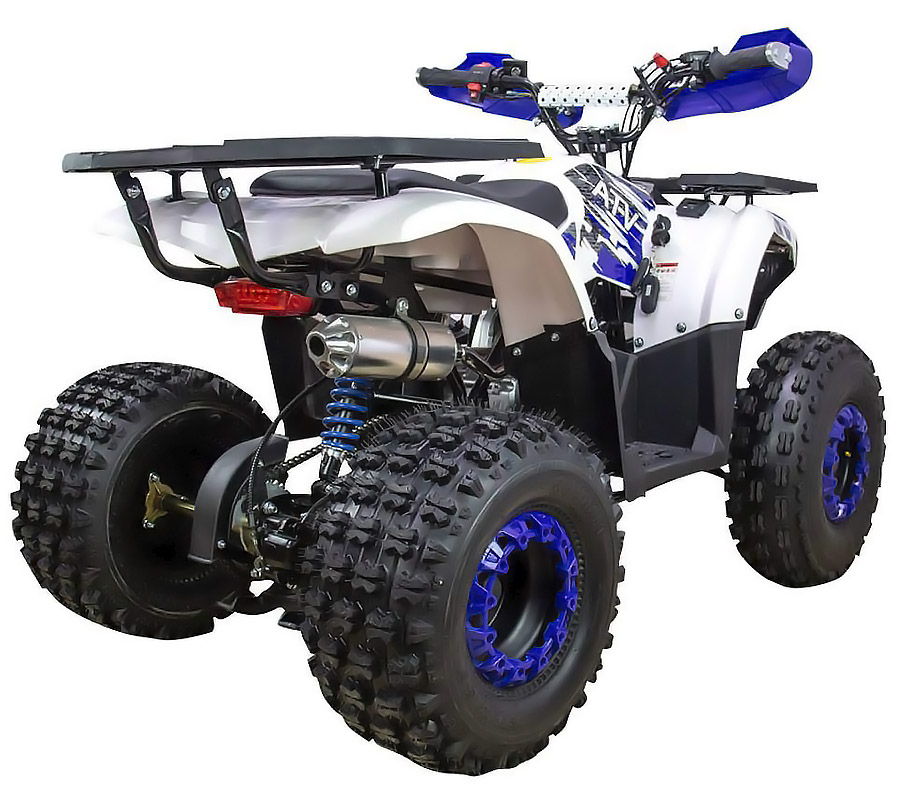July 7, 2011
by Brent McNamee
The history of the All-Terrain-Vehicle as we know it today is closely tied with the history of Honda. Honda has been the world's largest motorcycle manufacturer since 1959. During the gas shortage in WWII, Soichiro Honda (Honda's founder) was unable to use his car so he had the novel idea of attaching a small engine to his bicycle.
His idea gained widespread popularity and he established the Honda Technical Research Institute in Hamamatsu, Japan, to develop and produce small 2-cycle motorbike engines. Over 18,000 bicycle shop owners across Japan took part in the research, an initiative that helped bring together a nation torn apart by war. Thanks to this research institute Honda would pave the way for the modern ATV.
Here is how ATVs have evolved through time.
Though Honda would become the most popular ATV brand later on, the very first ATV was actually developed in 1961 in Toronto, Canada and called the Jiger. The Jiger was a 5 1/2 horsepower, 200 pound, 6-wheeled amphibious ATV, meaning the vehicle could travel on land and water. The first Jigers built for sale were all built to order.
Prospects for the product included sportsmen and the military. The Jiger was marketed as a "Go Anywhere Vehicle" and began being mass produced in 1965. Despite its popularity, the company’s financial troubles caused production to end in 1968.
In 1967, American Honda asked one of its engineers, Osamu Takeuchi, for a new product that dealers could sell when motorcycle sales cooled off in the winter. Takeuchi drafted many design ideas, vehicles with 2 wheels, 3, 4, 5, and even 6-wheeled models like the Jiger. Out of all the designs, the 3-wheeled concept far outweighed two wheelers in snowy, slippery or muddy conditions and also provided better maneuverability.
The challenge was finding tires that would actually get a grip on soft terrain like snow.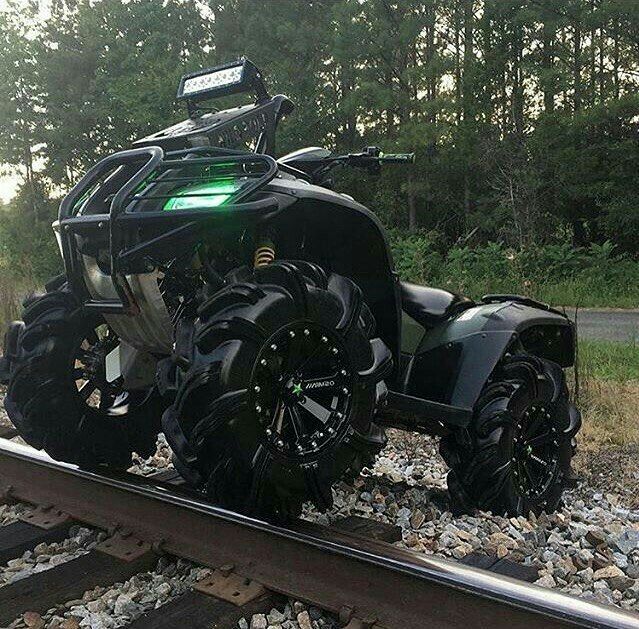
Honda then sent Takeuchi an invention called the Amphi-Cat, with six, 20-inch, low-pressure, high-flotation balloon tires. (The Amphi-Cat was actually the Moon Buggy in the British television series Space: 1999 pictured below)
Takeuchi’s tires would tack on another 2 inches to make 3 full 22-inch, low pressure balloon tires. Those tires allowed the vehicle to go places others couldn't, leaving little or no damage in their passing.
Honda brought the world’s first ever three-wheeled ATV or rather ATC (All-Terrain-Cycle) to the United States in 1970 and it was a hit. It was marketed and sold as a recreational vehicle and was famously portrayed in the James Bond movie Diamonds Are Forever, as well as popular TV shows like Magnum P.I and Hart to Hart. The three-wheeled US90 had a seven horsepower engine and sold for $595.
Honda released the ATC 70 a smaller version of the ATC 90 intended for youngsters.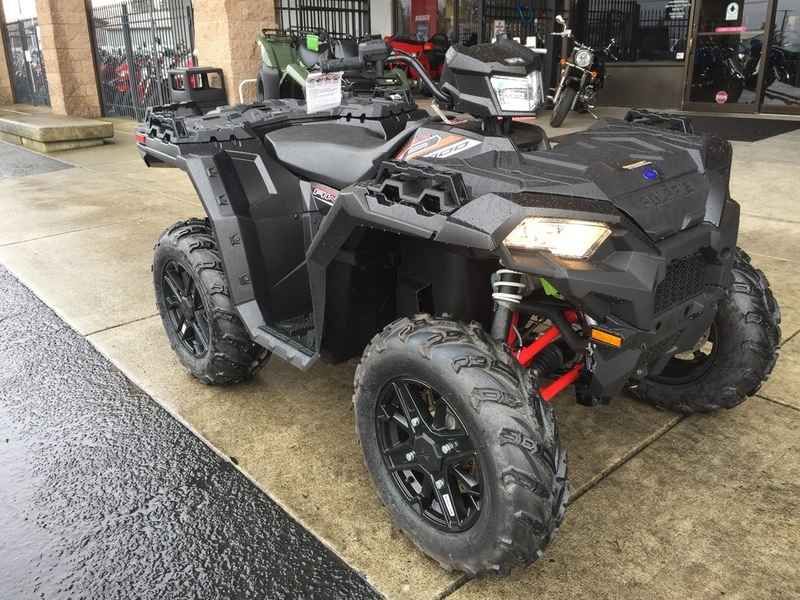
Though ATVs were originally targeted towards sportsmen until the 70's gas crunch when customers began purchasing them as utility vehicles for agriculture and farming purposes. This was because ATVs cost exponentially less than a tractor, and guzzled only 8 percent of the fuel needed to feed a tractor.
By the 1980s ATV demand was at an all-time high and they became multi-purpose machines serving both recreational and utility purposes
Honda's first official ATC racing participation came in the 1981 Parker 400 race held in the Arizona desert where it came in first.
With the widespread popularity of ATVs also came an increase in accidents and injuries, particularly among adolescents and children. This prompted an investigation by the Consumer Product Safety Commission (CPSC) in 1984. By 1986, their statistics suggested that most ATV accidents were due to improper rider behaviour rather than actual vehicle design.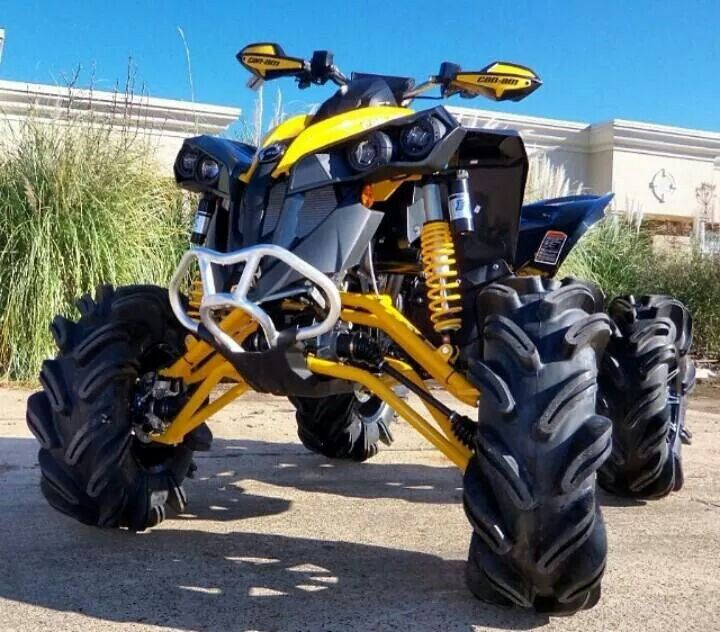
Nevertheless, on April 28, 1988, U.S. ATV distributors signed a 10-year agreement with the CPSC called the Final Consent Decree upon which the ATV industry made a $100 million commitment to expand existing ATV safety courses and programs. Among the many components of this agreement, ATV distributors had to offer free training and training incentives to owners and purchasers of new ATVs.
This agreement also marked the end of three-wheelers on the ATV market.
In 1982, Suzuki introduced the first 4-wheeled ATV called the QuadRunner 125 (pictured below). It came equipped with an odometer, five forward speeds and reverse! This quad paved the way for the 4-wheel ATV revolution.
In 1985, Suzuki took the ATV world by storm when it introduced the first high-performance 4-wheel ATV, the Suzuki LT250R QuadRace (below).
Meanwhile, Honda was working on its own 4-wheeled concept. After scrutinizing research, testing the prototypes with riders wearing 50-pound instrument packs that recorded information on every aspect of the machine’s operation, they unleashed their beast in 1984 known as the FourTrax TRX250R (below).
To this day, the FourTrax 250R continues to win awards for its performance.
1984 was Honda's biggest sales year for ATVs. 370,000 units were delivered making up 69 percent of total ATV sales in the U.S. that year.
In 1986, Honda unveiled the first four-wheel-drive ATV, the FourTraxª 350 4x4. For its grand unveiling it was lowered from a helicopter to show all four wheels moving under their own power.
This model would ultimately become the most versatile and popular ATV in history.
ATVs have become more than recreational vehicles and have stood the test of time as vital tools in a wide range of industries from farming, agriculture, hunting, industry, ranching but also an important means of mobility for people with disabilities.
Interestingly, many of the uses and application for ATVs have sprung from their owners, who have helped shape their growth and design along the way.
Nowadays when you notice an ATV you will always find the four-wheeled one. In some parts of Australia, New Zealand, and the United States the All-Terrain Vehicle is also called a ‘four-wheeler‘ in the name.
In some parts of Australia, New Zealand, and the United States the All-Terrain Vehicle is also called a ‘four-wheeler‘ in the name.
As you know they are very similar to a bike the other common name for ATV is ‘quad-bike. The ATV we see today wasn’t exactly like that in the ’80s or the ’90s.
How Many Wheels Does a Quad Bike Have ?Modern day Quads have four wheels attached to the main frame body.
How many wheels does an ATV have?The modern-day ATV has arrived after several changes and developments on the previous models. It is very common to have questions like- how many wheels did the original atv have? Or was the ATV always like that how you see today?
Well, the answer to that will be No, the ATV was very different in earlier years and was no so efficient and strong.
The All-Terrain Vehicle is one of the most unique vehicles in existence today. As the name suggests and you might already know they are meant to be driven on off-road trails and are really thrilling to ride.
ATVs will take you on terrains where you would be not willing to go on foot but would have the urge to explore. The adventurer in you would be satisfied when you choose to ride in the woods, desert, muddy terrains, and even on snow.
Everyone should know a bit of the history of the vehicle which is the source of immense joy today for many.
Three ATVs together on a hilly region.Check here to know on Top 10 Best ATV Tires
The first ATV concept that was executed looked like a juggernaut and would have dominated on multiple kinds of terrains without any issues.
This vehicle was made in Canada and had six wheels. The name stood as Jiger and was a one-of-a-kind vehicle in the world.
The Jiger had an engine of 5.5 Horse Power and weighed around two hundred pounds in weight. But in the early years of the Jiger, it could be only bought through a special kind of order and wasn’t produced in bulk until after 1965.
The vehicle had always been without straddle. But when the straddle-ridden ATV came into existence the Jiger was was given a new category called the AATV where the first letter stood for Amphibious.
John Gower was the prime mind behind the invention of the Jiger. The first Jiger which was made fully functional was glowing yellow in color and had tires of Firestone.
But the tires, later on, had to be replaced by genuine balloon tires. After this whoever was willing to get a Jiger six-wheel ATV had the option of getting a roof on the Jiger for protection from the afternoon sun and occasional rain.
Near to the ’70s, the engine was modified and around two thousand special order Jigers were delivered by that time. The company concluded the production of Jigers in 1968. But before they closed totally versions of the Jiger were purchased by the US army department, the British army, and the sophisticated NASA.
This proved the credibility and uniqueness of the vehicle and made Gower proud of his creation.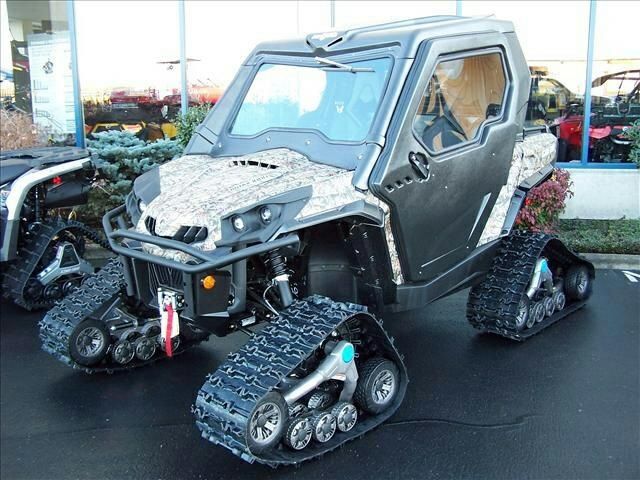
For the question of how many wheels did the original atv have?, you should know that although the six-wheel one was the first ATV, the three-wheeled one didn’t come much after The original three-wheel ATV design originated in the mid-’60s after the six-wheel Jiger was already known to people.
Much surprisingly the three-wheel ATV named the Sperry-rand Tricart was made as a graduation project at the Cranbrook Academy of arts.
The designer named John Plessinger sold the patent and design rights to Sperry Rand who made them commercial.
Many other small companies tried to make an impact but were defeated as Honda and other giants stepped into the three-wheel ATV market.
The first ATV with only three-wheel was the US90 model which was straddle-ridden and was comfortable.
Honda, later on, trademarked the term ‘All-Terrain Cycle’ which remains in connection to all three-wheelers existing today as well. The vehicle surprisingly had the balloon tires like the six-wheel AATV.
The vehicle surprisingly had the balloon tires like the six-wheel AATV.
Honda was the king of the market around the early 80s because of their ruling patents of design and engine positions.
They got royalties for the patent from different companies who were entering the ATC market with their vehicles. Kawasaki, Suzuki, Yamaha entered the market in the 80s and honda got new competitors.
Later on, many sports ATC were introduced into the market by all them having great features like suspension and racks for utility and it became very much popular and much more in selling figures for the companies.
Later on, came the 200cc models which sold record units for being the largest displacement vehicle under honda. They sold all of the six models in huge quantities making a large sum of five-hundred thousand units sold in just three years.
There is just so much that happened in connection to the modern ATV. In here you would get much more answers than just – how many wheels did the original atv have?
A three-wheel Honda brand ATVCheck here to know on Top 10 Best ATV Tires
The Modern Four-Wheel ATV
The first ATV model was manufactured by Suzuki in the year 1982.
The first ATV was manufactured in the year 1982.
What was the first 4 wheel ATV?The colossal brand Suzuki was the leader in making the mass production of four-wheel ATVs possible. The first model was named Quad Runner LT125. This model was manufactured by Suzuki in the year 1982.
Why did they stop making 3 wheel ATVs?The manufacturing of three-wheel ATVs was stopped by every company by 1987 because of safety issues and surpassing the legislations.
All of the brands agreed on a ten-year moratorium for production and also to finance a hundred million dollars ATV campaign for safety.
Even after ten years, no one went back to building the three-wheel ATVs whereas the focus shifted to four-wheel designs.
The ATC which stay in running condition falls under the same rules and regulation today as of the four-wheel ATVs. Nowadays the ATVs that are sold under the sports banner today have very different features than the utility category.
Nowadays the ATVs that are sold under the sports banner today have very different features than the utility category.
They are much smaller in size, lower in weight. The utility models are much bigger with a lower speed limit. They are capable of pulling load on attached racks. There are various models in the market today which involve different suitability of application.
Conclusion
Thus the four-wheel ATV was not just like the ones you see today rushing through terrains. After several shifts in the industry, the four-wheel ATV was mass-produced and was available from various brands to buy.
You might rarely notice a three-wheel ATV but they remain in very little quantity as the production was stopped.
The amphibious ATV was also not much suitable for trail riding and driven for varying purposes. They could only be used for a singular application and needed much practice for comfortable handling.
In the history of ATVs, the company Polaris (Polaris) occupies, without exaggeration, an important place, since it was for the first time in the USA that a full-fledged ATV ATV (All Terrain Vehicle - all-terrain vehicle) was released - a direct prototype modern ATV, built according to the latest technology at that time.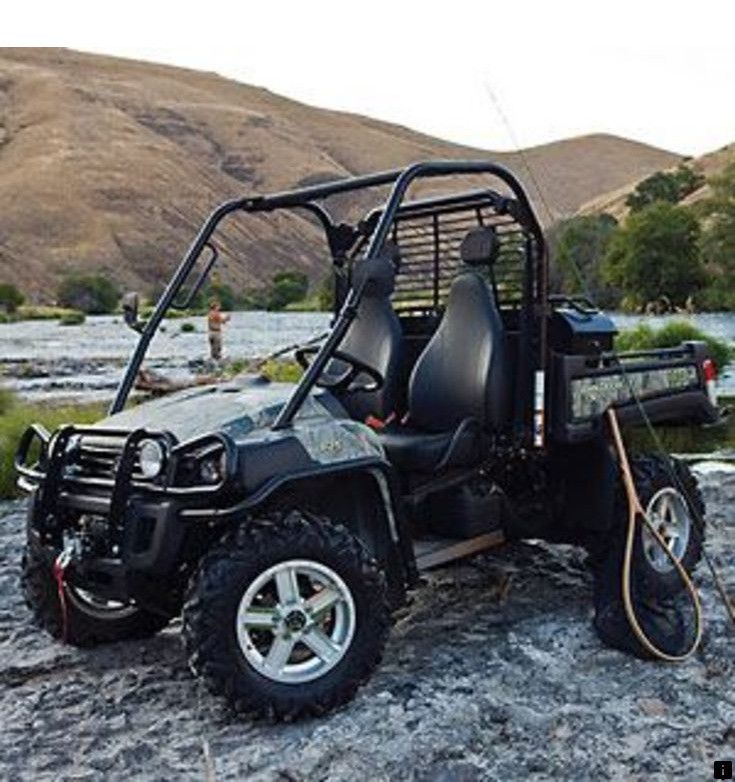 But first things first.
But first things first.
The distant progenitor of ATVs, as well as motorcycles, was, of course, a bicycle. We will not go into historical details, but it is worth mentioning the very first car that can be called the ancestor of the ATV. Her in 1896, became Henry Ford's creation : a four-wheeled wagon with a two-cylinder engine of 4 horsepower unprecedented at that time, running on ethanol. On the wagon, he installed bicycle wheels and a double seat that looked like a toolbox.
In 1924, the Frenchman Charles Moshe introduced the public to the public "velocar" with pedals - in fact, just a more stable version of the bike, developing a decent speed by those standards. He was very liked by those who did not have the funds for an expensive car. "Velocars" were popular with the French for a long time and gained particular relevance during the Second World War, when France was under fascist occupation, and gasoline was practically unavailable.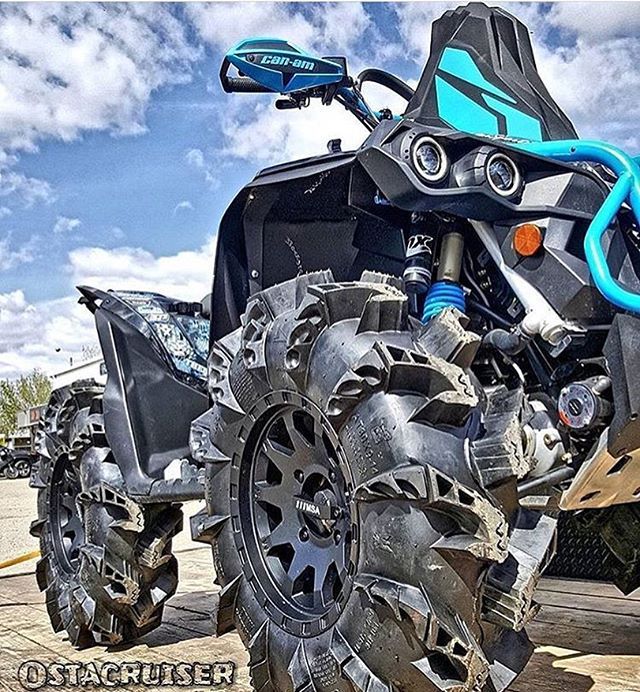
However, if we do not take into account the usefulness of Moshe's creations for civilians during the war years, then
For about half a century, nothing fundamentally new was created in this industry. Craftsmen came up with structures similar to each other, evolution stomped on the spot. And there was no great need for it: the development of the automotive industry nullified the popularity of ATVs.
The next step in the development of the direction was marked by 1967 . In fact, it was from this moment that the story began off-road motorcycles.
John Plessinger - a graduate of the Cranbrook Academy of Science and Arts near Detroit - built an off-road tricycle as his thesis, calling it the "Sperry-Rand Tricart" and positioning the pilot's seat in a comfortable and stable recess.
But Plessinger's creative muse did not rest on this, and he set to work on the creation of the Tricart Stretcher Dragster, a tricart of a special design with a wheel far forward and resembling an arrow.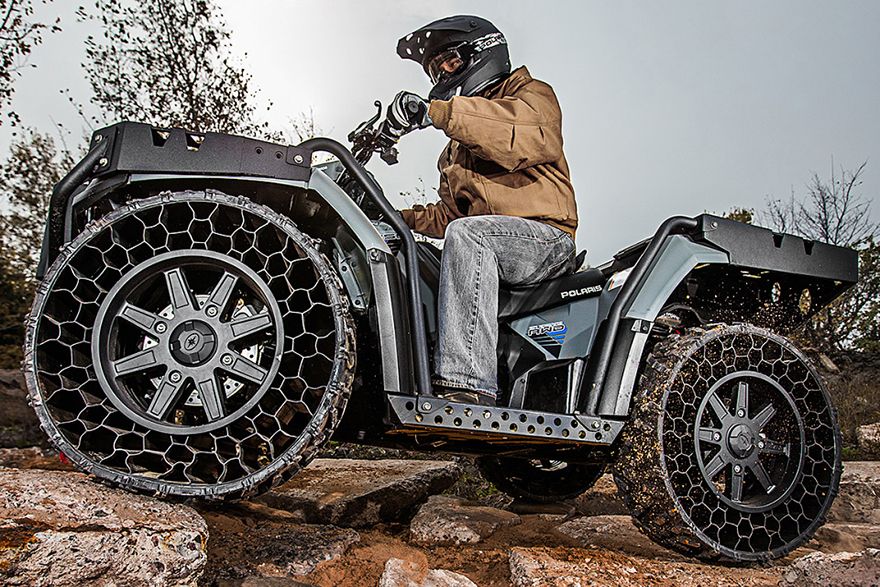 He built this strange-looking unit for himself in order to race and ride on a frozen lake.
He built this strange-looking unit for himself in order to race and ride on a frozen lake.
So, Plessinger patented the result of his thesis and sold the rights to its commercial production to a large company, which prompted smaller companies to do similar business.
But they were not destined to remain in history: in 1970 the Japanese Honda, which by that time had become one of the largest manufacturers of motorcycles and cars, released a hybrid of a car and a motorcycle - tricycle US 90 with a 70 cm engine 3 . However, the brainchild of the brilliant engineer Osamu Takeuchi did not at first take root in his homeland. But in the US, it was received with a bang: the all-terrain tricycle gained tremendous success on the sands of California beaches, demonstrating its suitability to be not only a household helper, but also a great way to get a drive from extreme skiing.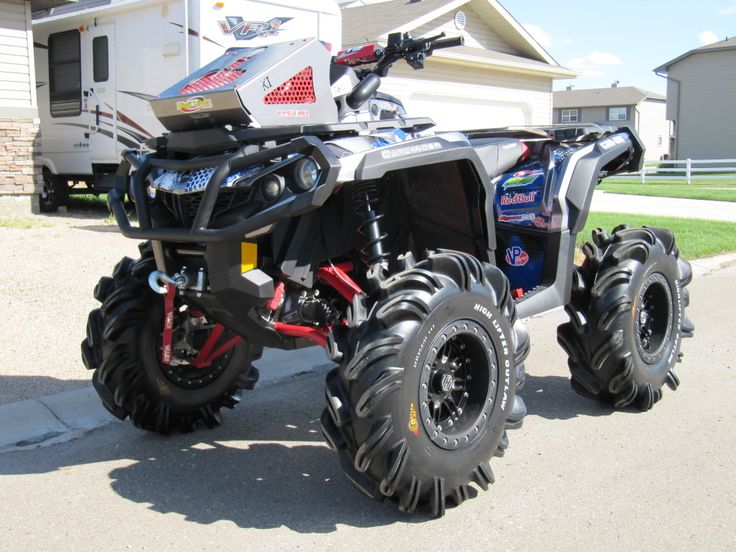
The Americans liked the Japanese tricycle so much that they even filmed it in one of the parts of the James Bond film Diamonds Are Forever ( Diamonds Are Forever , 1971).
Honda patented its invention literally from all sides, thanks to which for a long time it remained practically a monopolist in the production of three-wheeled all-terrain vehicles of this design.
However, in 1982 designer Aki Goto from Suzuki made a knight's move: he added a fourth wheel to his ALT125 and received a Suzuki QuadRunner LT125, and with it a good niche in the industry.
Curiously, the four-wheeled model was originally created as a "recreational vehicle for beginners." That is, a more stable four-wheel scheme was intended only to make it easier for inexperienced riders to learn, after which they had to change to more powerful three-wheeled ATVs. In addition, the addition of another wheel meant a heavier and more complex design, and hence a rise in price.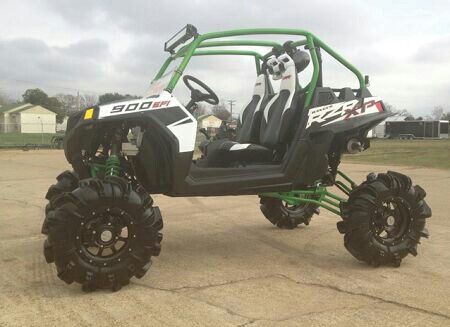 But, despite all the nuances, the four-wheelers quickly pushed aside the three-wheeled competitor as much less balanced, stable and very dangerous when maneuvering.
But, despite all the nuances, the four-wheelers quickly pushed aside the three-wheeled competitor as much less balanced, stable and very dangerous when maneuvering.
Here, in Japan in 1982, the era of modern ATVs begins, associated with freedom, drive and the conquest of places that previously seemed impregnable for wheeled vehicles.
A In 1985 enters the "quad arena" Polaris with a real breakthrough - the first in the US 4-wheeled Polaris Trail Boss ATV. It pioneered the use of revolutionary technical features for the time, such as a variable speed automatic transmission (PVT), MacPherson type ATV front suspension, long travel rear suspension, all-wheel disc brakes and full-length solid footpegs.
At the same time as the Polaris Trail Boss, the Polaris Scrambler tricycle was produced. However, without releasing even 2000 copies, in 1986 it was discontinued, since tricycles lost their relevance.
The Polaris Trail Boss set the benchmark for a full-fledged 4-wheel ATV for years to come, and kicked off the ATV market. Polaris has a firm place in the hearts of off-road enthusiasts. At the same time, each of the motorcycle manufacturers tried to release something new, trying to attract a buyer with engine size, equipment, and additional features. However, no one has succeeded in removing Polaris ATVs from the pedestal of the leader in the world of all-terrain vehicles.
Year after year, Polaris designers and engineers have improved their ATVs both in terms of performance and appearance. Particular attention was paid to improving the safety of the ATV driver.
As early as 1987, the introduced Polaris' first AWD automatic four-wheel drive system, which automatically engages all four wheels of an ATV when extra traction is needed, and switches to rear-wheel drive when that need no longer exists.
Since 1996, Polaris Sportsman ATVs have been fitted (an industry first!) with IRS independent rear suspension to minimize body roll and ensure a smooth ride.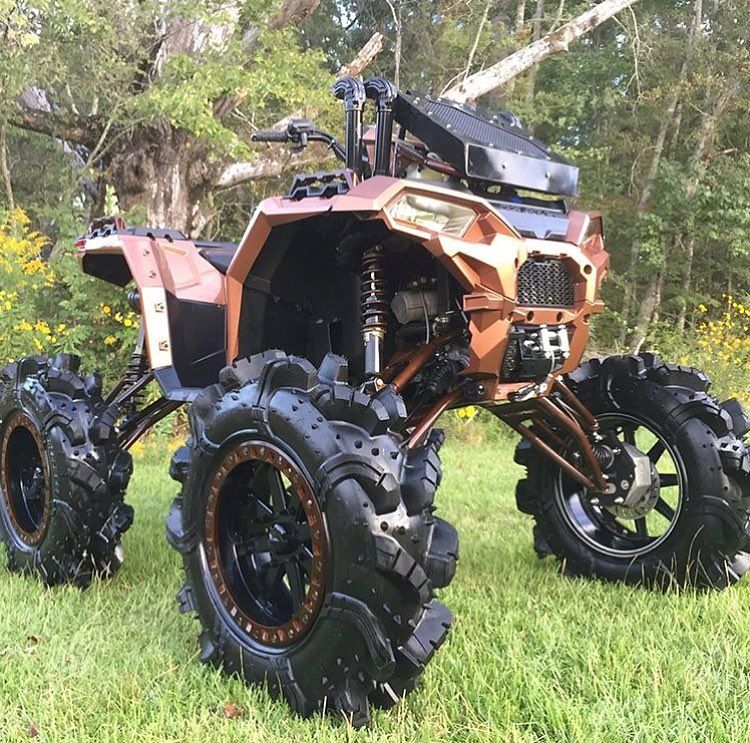
These exclusive technical solutions, combined with the high strength of the frame, the reliability of all components and assemblies have made the Sportsman one of the most popular ATVs in the world! Thoughtful and trouble-free, a good part of enthusiastic riders wished to buy a Polaris ATV.
Concerned about enhancing the experience of outdoor enthusiasts, Polaris has developed and since 2005 brought to market the first accessory standardization system Lock&Ride . It allows you to install and remove all kinds of additional accessories and options for ATVs in minutes, including windshields, mirrors, cargo area guards, hand protection, driver and passenger seat heating, box bags, gun cases and even snow plows.
In 2006, Polaris releases the first mid-size ATV with IRS independent suspension on the ATV market. A year later, the first ATVs with a convertible rear seat appear.
2008 marks a significant milestone in the company's history with the sale of the 1,000,000th Sportsman ATV.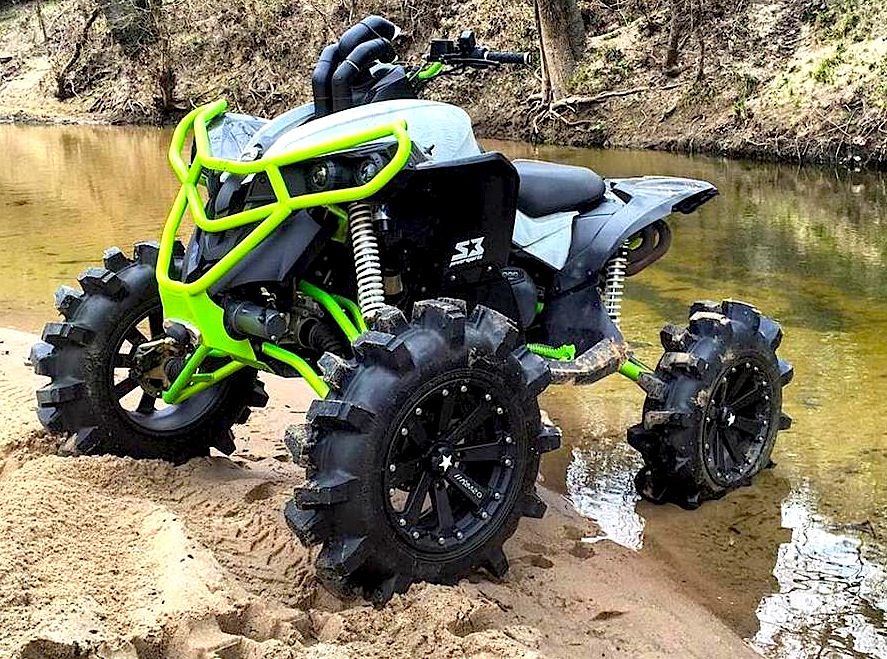
2011 marked the release of the Sportsman XP EPS 850 EFI , the most powerful ATV in the industry with a new 75 hp 850cc engine.
Today, the company has one of the largest sales markets for its products, including the military industry, which is the best confirmation of the quality and reliability of Polaris equipment.
Tackling sultry sands, traversing foggy off-road hunting, wading through taiga forests, tackling work debris on the ground, or winning quadcross competitions, Polaris ATVs handle it all with ease.
In 1997, introduced the RANGER , the first all-terrain vehicle with a completely new concept: side-by-side side-by-side, automotive steering (with steering wheel) and roll cage. But its main difference, of course, is in the utilitarian purpose. Its appearance markedly stimulated the development of a new class of multi-purpose utility SUVs UTV (Utility Terrain Vehicle).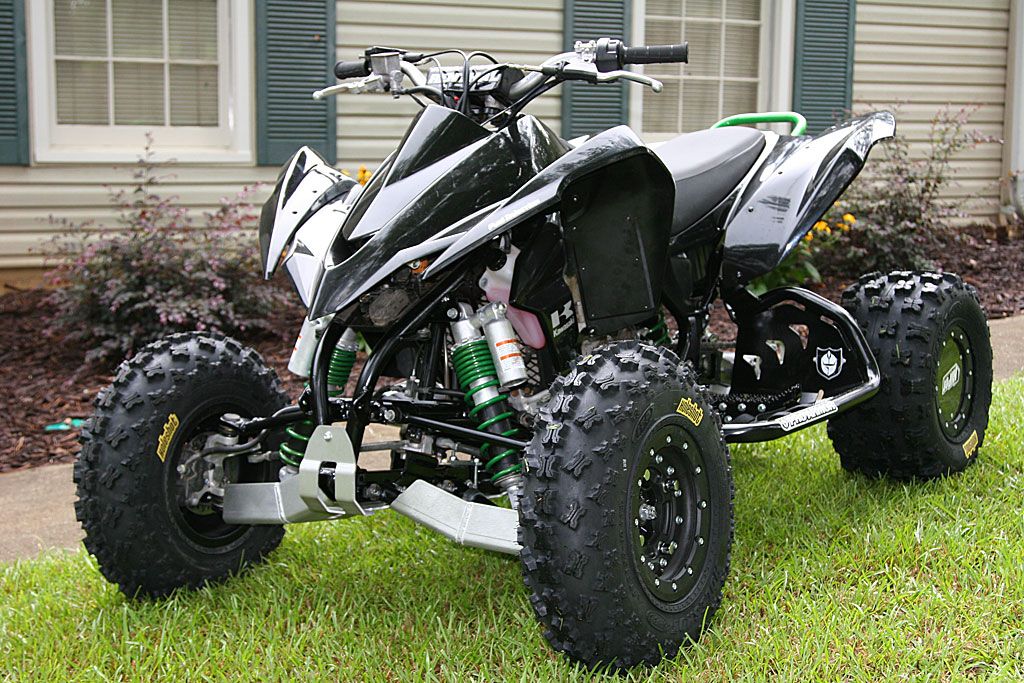 RANGER was immediately appreciated by farmers, for whom these machines have become excellent assistants in their work. It can safely be called the most convenient, most practical and versatile all-terrain vehicle. This "workhorse" was created in order to transport household goods, remove snow, clear debris and debris, even uproot stumps. The RANGER is also good for recreation - many have “tasted” it on hunting trips, fishing trips and travels in the wild. Not surprisingly, this branch of Polaris production began to develop rapidly and intensively, and today has a large model range with many specifications.
RANGER was immediately appreciated by farmers, for whom these machines have become excellent assistants in their work. It can safely be called the most convenient, most practical and versatile all-terrain vehicle. This "workhorse" was created in order to transport household goods, remove snow, clear debris and debris, even uproot stumps. The RANGER is also good for recreation - many have “tasted” it on hunting trips, fishing trips and travels in the wild. Not surprisingly, this branch of Polaris production began to develop rapidly and intensively, and today has a large model range with many specifications.
The first ATVs appeared at the same time as cars, in the 20s of the XX century, and had a ridiculous power by today's standards - about 2 hp. But it was these initiatives that made it possible, after 100 years, to launch the production of the most compact, powerful and maneuverable equipment. In this article, we will tell you how the production of ATVs originated, what the first models looked like, and how the ATV market developed.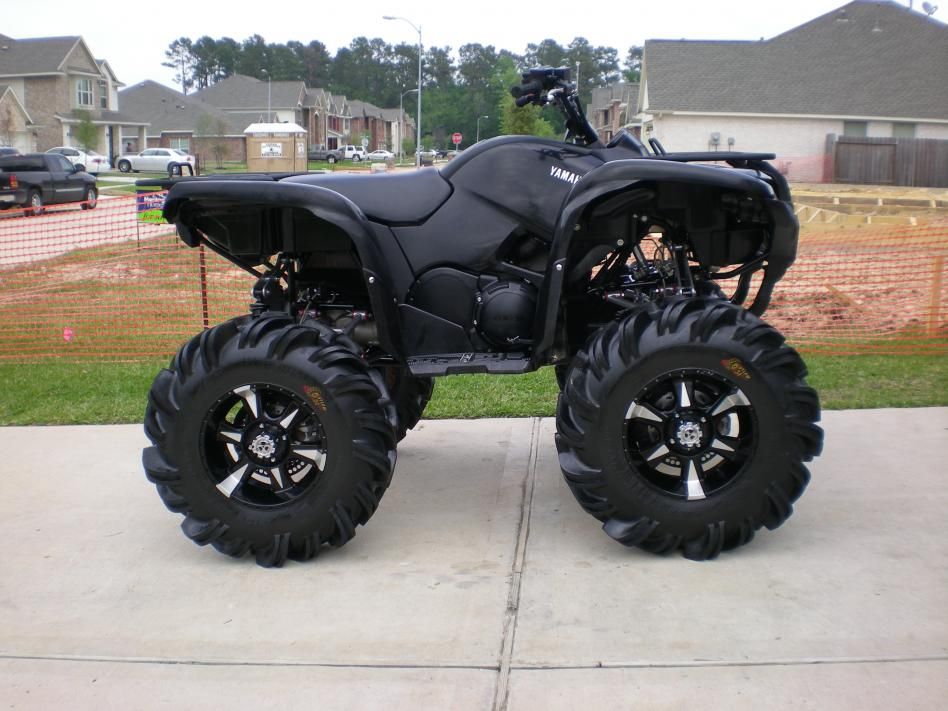
J. Ward's four-wheeled cart, 1850
The prototype of modern all-terrain vehicles is a rear-wheel drive four-wheeled cart with steering, introduced by the British J. Ward in 1850. It resembles a bicycle, only faster and more stable.
Ford Quadricycle — a four-wheeled wagon powered by Henry Ford, 1896.
One of the first quadricycles — Henry Ford's Ford Quadricycle model. It worked on a 2 hp two-cylinder engine. - indicators unprecedented at that time. The engine ran on ethanol, the wheels were bicycles, and the seat for two was like a tool box.
Charles Moshe's Velocar
In 1924, the Frenchman Charles Mochet introduced the public to the public with the pedaled "velocar", essentially a more stable version of the bicycle. The model was double: while one rider pedaled, the second could rest. This invention helped France during the Second World War, when the territory of the country was under the occupation of Germany, and gasoline was impossible to get.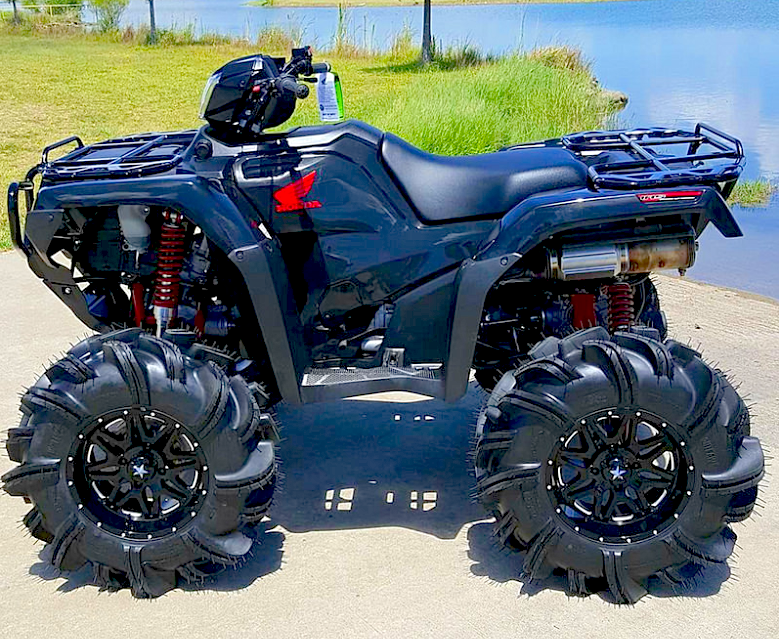 Charles Moshe's bicycle cars have survived to this day - they can be seen in museums in France.
Charles Moshe's bicycle cars have survived to this day - they can be seen in museums in France.
Honda US 90 tricycle in Diamonds Are Forever (1971) four-wheeled motor vehicle. In 1970, Osama Takeuchi of Honda releases the US90 three-wheel hybrid. The model received the practicality of a car and the maneuverability of a motorcycle. The invention was positioned as an all-terrain motorcycle.
The engine used in the Honda tricycle was a single-cylinder four-stroke engine with 70 “cubes” from the Honda ST70 motorcycle. The triangular-shaped frame and leading rear-wheel drive performed well in tests. Much more problems were with the wheels - the company has been looking for suitable options for a long time. As planned by Takeuchi, the wheels had to be stable on sand and snow. Many options were considered, including farm cultivators. The choice fell on wheels from an American amphibious all-terrain vehicle, which easily traveled through swamps, mud and snowdrifts. These were low pressure tires on high profile tires. Based on them, Honda's own 22” wheels with a pressure of 2.2 psi and a developed tread were developed. Due to the low specific gravity, the tricycle could move on water, not to mention loose soil.
These were low pressure tires on high profile tires. Based on them, Honda's own 22” wheels with a pressure of 2.2 psi and a developed tread were developed. Due to the low specific gravity, the tricycle could move on water, not to mention loose soil.
Farmers were expected to be interested in the novelty. However, this did not happen and the lack of demand almost led to the closure of the project. Wealthy Californians showed interest in Honda's tricycle. They were looking for transport to move along the wide sandy beaches - cars and two-wheeled bikes were not suitable for this purpose, but the tricycle felt confident in such conditions. Thus, the development was saved.
Yamaha Tri Moto (YT125), 1986
Kawasaki KLT 200, 1981
The apparent success of the US90 was noticed by other Japanese auto and motorcycle manufacturers. They delved into the essence of the idea and began to produce analogues. Honda has vigorously defended its rights to the tricycle in the courts. She won her first plagiarism lawsuit with Yamaha. But that didn't stop the competition. Already in 1980, Yamaha introduced the 123 cc YT125 tricycle, and in 1981, the Kawasaki brand presented the KLT 200 all-terrain vehicle to the public. American Arctic Cat and Polaris also patented their developments.
She won her first plagiarism lawsuit with Yamaha. But that didn't stop the competition. Already in 1980, Yamaha introduced the 123 cc YT125 tricycle, and in 1981, the Kawasaki brand presented the KLT 200 all-terrain vehicle to the public. American Arctic Cat and Polaris also patented their developments.
Suzuki QuadRunner LT 125 ATV, 1984
Work on the design of the all-terrain vehicle-tricycle did not stop. In 1982, Suzuki's Aki Goto ventured a fourth wheel on his own Suzuki ALT125 tricycle, with the suspension and footpegs remaining the same. So the first four-wheeled all-terrain vehicle Suzuki QuadRunner LT125 appeared.
By that time, three-wheeled all-terrain vehicles had become very popular. But tricycles were not treated as a full-fledged mode of transport, which entailed a large number of injuries. US product safety regulators have helped to make unstable tricycles forgotten. At the same time, safety rules for ATVs were tightened.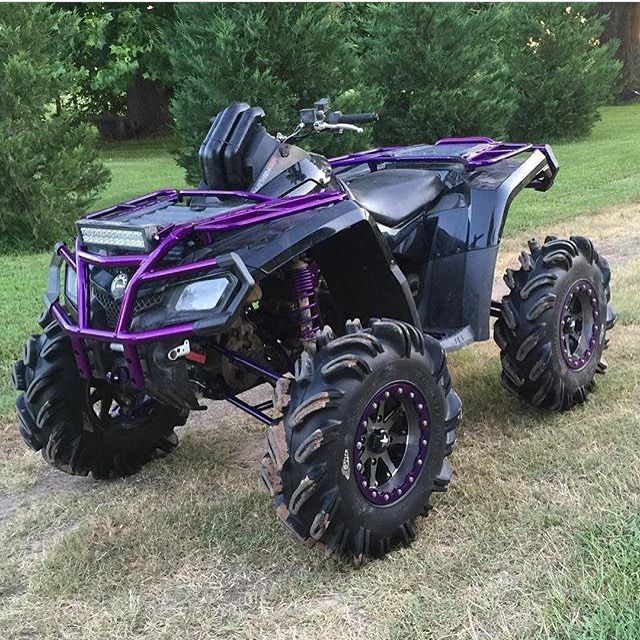
1984 Suzuki QuadRunner LT 125
1985 marked the introduction of the world's first all-wheel drive Honda FourTrax TRX350 4x4. He received a limited slip differential and an engine with an oil cooler.
1991 Suzuki KingQuad LTF 300 ATV
1987 Yamaha Big Bear 350 ATV
1995 Polaris Trail Boss 250 ATV
-cc engine, low and high transmission, reverse, cardan drive, hydraulic front brakes and lockable front axle.
American brand Polaris has entered the ATV race. The company released the Trail Boss 250 4x4 model with automatic transmission.
In 1991, Suzuki released the KingQuad 4x4. The all-terrain vehicle received a single-cylinder four-stroke 280 cc engine, independent suspension, a 5-speed gearbox with differential lock and reverse.
CFMOTO CFORCE 1000 EPS
The 2000s saw the entry of Chinese ATVs into the international market. Concern CFMOTO is the leader in terms of production of all-terrain vehicles among Chinese manufacturers.